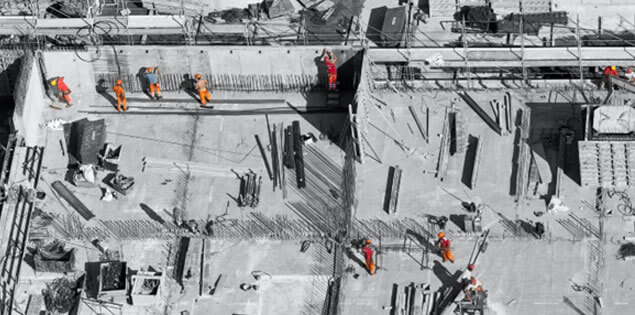Construction accounts for over 10% of global GDP and employs roughly 7% of the workforce. Contributing to the country’s socio-economic development, it provides shelter, infrastructure, and employment. A downside is that the building industry accounts for 38% of all energy-related GHG emissions. Steel, glass, and cement production are big contributors to emissions within the construction industry. Cement production, a key component of concrete, accounts for ~7% of global CO2 emissions. Cement production increased in direct CO2 intensity by 1.8% per year between 2015 and 2020, but a decline of 3% per year is needed until 2030 to achieve Net-Zero Emissions. Consequently, reconciling net-zero missions and socio-economic development is a challenge. To overcome the challenge, green or low-carbon materials, such as low-GHG steel and cement, can be substituted for energy-intensive construction materials.
Green materials are becoming more popular as market players focus more on environmental sustainability. The global market for green building materials is expected to reach US $673.41 billion by 2030, growing at a CAGR of 10.9%. However, a lack of investment hinders the growth of the green building materials sector. Green materials are plagued by funding shortages throughout their lifecycle, from research and development to manufacturing and application. This is owing to high-risk perception and lack of incentives for the investors, which are exacerbated by the following challenges:
- Lack of strong codes and standards: While some countries like the United States and Saudi Arabia have sustainable construction standards, codes, and certification systems, others like India and Mexico do not. Consequently, integrating sustainable materials in the construction process is challenging. The resulting uncertainty in utilization makes financing research and development of materials less appealing
- Lengthy contracting and approval process: The prolongation of contracting and approval procedures exposes investors to higher risks such as fluctuation of interest rate and fluctuation of inflation rate, among others
- Lack of clarity regarding nomenclature: The nonuniform criteria for categorizing a material as green complicates investment decisions
- High capital costs: Limited production, specialized distribution, and responsible manufacturing raise development costs and make green material investments less attractive
To address these challenges, several solutions can be adopted to reduce capital costs and de-risk investments in the sector.
- Establishment of codes and standards: Consistent codes and standards will facilitate a sustainable structural design process, and ease the clearance procedures for sustainable buildings, reducing the risks for investors
- Standardised nomenclature: Ratings based on frameworks such as LEED can clarify the nomenclature of green materials. A specific goal of the LEED system is to promote sustainable material cycles. The LEED certification of materials can provide the clarity investors need to promote investments. In addition, clarity on nomenclature can be complemented by a framework to determine project eligibility under the “green materials” sector
- Prioritizing government procurement: An example is the US Federal Government’s Buy Clean Initiative. The initiative provides instructions for incorporating Buy Clean commitments into federal procurement and funding procedures. Such government procurements reduce the risk of investors in research and development
- Financing solutions: Banking solutions can cover green certification costs, offer strategic loans, or interconnected products (e.g. financing green construction projects and offering green mortgages). For example, in 2016, the State Bank of India offered SME loans to fly ash brick manufacturers. They aimed to reduce topsoil erosion and pollution.
Banks and financial institutions can also issue green bonds to finance sustainable construction projects. For instance, the US $525 million Green Bond raised by Eco Materials, supported their acquisition of USA-based Boral Resources, a fly ash maker and Green Cement Inc., a processor of slag and other cementitious materials. This has facilitated Eco Materials’ efforts to decarbonize high emitting industries like cement
- Disclosures: Data transparency through supplier reporting can also help investors track emissions and evaluate investment impact. Loans and bonds can be more successful and impactful with annual ESG reporting
In conclusion, environmental and health impacts are hidden costs associated with building materials. Internalizing these costs emphasizes the need to transition to low-carbon construction materials. However, for a successful transition, strong financing support is vital. Implementing the stated solutions will make the sustainable materials sector more attractive to investors and facilitate the transition to low-carbon sustainable materials.
Bibliography:
- https://mtcopeland.com/blog/five-building-materials-commonly-used-in-construction/
- https://www.epa.gov/enforcement/cement-manufacturing-enforcement-initiative#:~:text=The%20cement%20sector%20is%20the,nitrogen%20oxide%2C%20and%20carbon%20monoxide.
- https://www.bbvaopenmind.com/en/technology/innovation/alternatives-to-cement-construction-sustainable/
- https://www.transparencymarketresearch.com/green-building-materials.html
- https://sdg.iisd.org/news/unep-fi-report-explores-financing-for-green-building/
- https://gosmartbricks.com/top-6-challenges-hindering-rapid-adoption-of-green-building-practices-in-india/

